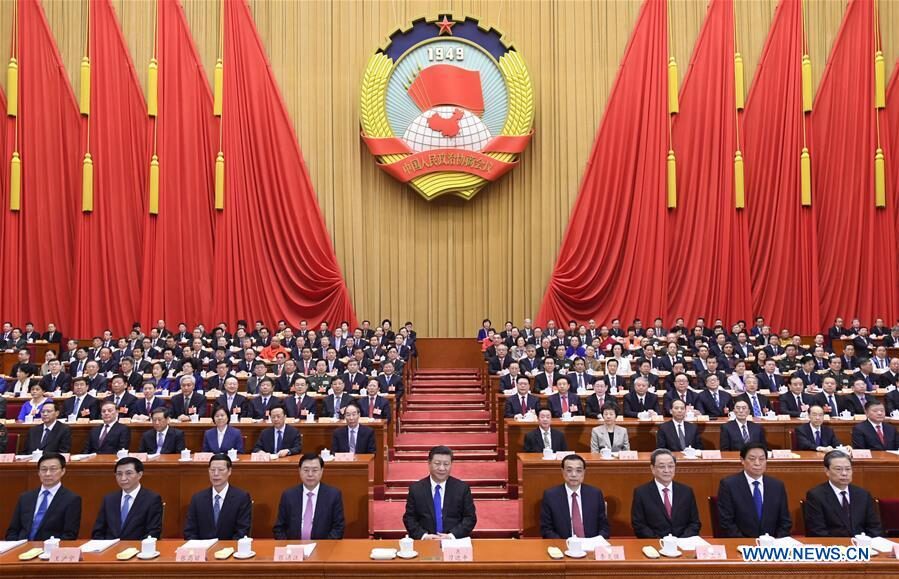The pathway demonstrated by Chinese foreign minister Wang Yi at the press talk to the national and international media at the eve of Two Sessions has generated the message for all that China will be continuously sharing the dividends of its reforms and development and bring the experience and lessons it has drawn from its own development to other countries.
The highlight of the announcement that gained the global attention from the press talk about the international development was about Belt and Road Initiative which stated that China will work with all parties to uphold the Silk Road spirit, deliver on the outcomes of the Third Belt and Road Forum for International Cooperation, and usher in a second golden decade of Belt and Road cooperation.
At the crossroads of economic globalization, the Belt and Road at its 10th anniversary has already emerged as the significant strategy being recognized as the key element for building a community of shared future of mankind.
The Chinese concept of shared future of humanity has won recognition of the United Nations that has become a guide for the international community in the 21st century for joining hands to move forward in harmony.
BRI shaping up layout of China’s second round of opening up is playing a new leading role in dealing with trade protectionism, creating an open, inclusive and shared economic globalization. It undertakes three historical tasks that firstly includes the advancement of inter connectivity of infrastructure, second is to focus on capacity cooperation and service trade and third is to aim at establishing a multilevel and diversified free trade area network.
In the first decade of BRI development, the achievements and tangible results of BRI are getting international applause and appreciations. Over the past ten years, the Belt and Road cooperation network has stretched from the Eurasian continent to Africa and Latin America. More than 150 countries and over 30 international organizations have signed Belt and Road cooperation documents with China. China hosted three BRFs, and launched together with its cooperation partners more than 20 multilateral dialogue and cooperation platforms in sectors of railway, port, finance, taxation, energy, green development, green investment, disaster risk reduction, anti-corruption, think tank, media, culture exchanges, etc.
The BRI, focusing on connectivity, has promoted development of the connectivity networks led by economic corridors, with major transportation passages and information highways as backbone, underpinned by railway, ports and pipelines, and encompassing land, sea, air and internet, which facilitated the flow of commodities, capitals, technologies and personnel among partner countries in the past decade. China has conducted more than 3,000 cooperation projects with relevant parties, and catalyzed investment of nearly USD 1 trillion.
Now, BRI bears a new mission of creating a free trade zone network aimed at accelerating the global free trade process. Taking the Belt and Road as primary tool for the formation of a large platform, large channel and large layout of China’s opening up, China is advocating the infrastructural development globally.
Over the past decade the tangible benefits have been recorded in all the continents flowing across the globe that is firmly adhering to the principle of extensive consultation, joint contribution and shared benefits and took effective actions on the basis of openness, inclusiveness, equality and mutual benefits. It became the new engine of opposing trade protectionism and promoting global economic governance reform as well as a new leading role in the process of inclusive economic globalization.
Since 2013, as the central task of the Belt and Road construction, “The Five-Connectivity Program” has won broad consensus and active participation of the international community, because it injected a new impetus into the regional and global economy as well as brought a new hope for world economy to overcome growth challenges.
Since the beginning of the worldwide financial turmoil in late 2008, trade protectionism has surged all over the world, consequently impacting multilateral trading system. In this context, the Belt and Road Initiative is advocating economic globalization with the aim of opening up the global distribution channels of production factors as well as using interconnection and capacity cooperation to boost the economic globalization process. Over the past 10 years , China has carried out international capacity cooperation with more than 150 countries .
Trade and investment are expanding steadily. From 2013 to 2022, the cumulative value of imports and exports between China and other BRI countries reached 19.1 trillion U.S. dollars, with an average annual growth rate of 6.4 percent. The cumulative two-way investment between China and other BRI countries reached 380 billion U.S. dollars, including 240 billion U.S. dollars from China.
By the end of August 2023, more than 80 countries and international organizations had subscribed to the Initiative on Promoting Unimpeded Trade Cooperation Along the Belt and Road, proposed by China. China had signed 21 free trade agreements with 28 countries and regions.
The financial cooperation mechanisms are maturing. China Development Bank (CDB) has promoted the establishment of multilateral financial cooperation mechanisms such as China-Central and Eastern Europe Interbank Consortium, the China-Arab Countries Interbank Association, China-ASEAN Interbank Association, the ASEAN Plus Three Interbank Cooperation mechanism, China-Africa Interbank Association, and the Association of China-LAC Development Financial Institutions.
The channels and platforms for investment and financing are constantly expanding. China has funded the establishment of the Silk Road Fund (SRF) and established the Asian Infrastructure Investment Bank (AIIB) with other participating countries.
The SRF specifically serves BRI cooperation. By the end of June 2023, the fund had signed agreements on 75 projects with committed investment of about 22 billion U.S. dollars; the number of AIIB members had reached 106, and the bank had approved 227 projects with a total investment of 43.6 billion U.S. dollars.
(The author is a researcher on diplomacy and media fellow of China International Press Communication Centre)


